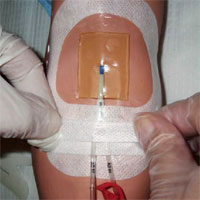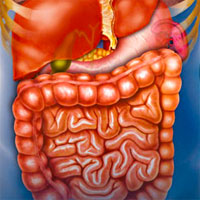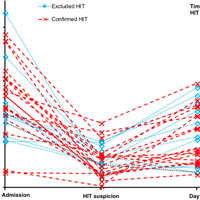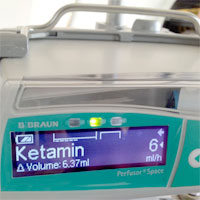Tag: study

Sustained reduction of catheter-associated bloodstream infections with enhancement of catheter bundle by chlorhexidine dressings over 11 years
The addition of chlorhexidine dressings to all CVC and arterial lines to an ongoing catheter bundle was associated with a sustained 11-year reduction of all catheter-associated bloodstream infections. This large real-world... read more

Gut Dysmotility in the ICU
Off-label metoclopramide and/or erythromycin administration are effective for upper gastrointestinal dysmotility but have adverse effects. Trials of alternative or novel promotility drugs have not demonstrated superiority... read more

How and Whom to Monitor for Seizures in an ICU
Prevalence of seizures detected by continuous electroencephalography was significantly higher than with routine electroencephalography. Prevalence was particularly high in post convulsive status epilepticus, CNS infection,... read more

Prevalence and outcome of heparin-induced thrombocytopenia diagnosed under veno-arterial extracorporeal membrane oxygenation
Prevalence of HIT among patients under VA‑ECMO is extremely low at 0.36% with an associated mortality rate of 33.3%, which appears to be in the same range as that observed in patients treated with VA‑ECMO without HIT.... read more

Thiamine Deficiency: Pearls and Pitfalls
Although thiamine would not be isolated until 1911, the clinical syndrome of thiamine deficiency was recognized as far back as 2700 BC, when the term "beriberi", meaning "wasted wasted" was first coined in China. Nearly 5,000... read more

Long-Term Outcome after Prolonged Mechanical Ventilation
Among patients receiving prolonged mechanical ventilation at an LTACH, 53.7% were detached from the ventilator at discharge and 1-year survival was 66.9%. Respiratory strength was well maintained, whereas peripheral strength... read more

Study of the Effects of Epinephrine on Cerebral Oxygenation and Metabolism During Cardiac Arrest and Resuscitation by Hyperspectral Near-Infrared Spectroscopy
Epinephrine administration by bolus resulted in transient improvements in cerebral oxygenation and metabolism, whereas continuous epinephrine infusion did not, compared with placebo. Future studies are needed to evaluate... read more

Oxygen Use, Lower Lung Function Seen as Predictors of Death or Transplant in IPF
The use of oxygen at rest is associated with a greater likelihood of death or lung transplant in people with idiopathic pulmonary fibrosis (IPF), a study shows. The results also showed that lower lung function at the start... read more

Defining Sepsis on the Wards
The aim of this study is to look at the prevalence (commonness) of sepsis across acute hospitals (hospitals with an emergency department) across Wales using the currently used and new definitions of sepsis. Sepsis is a major... read more

Ketamine Sedation for Patients With Acute Behavioral Disturbance During Aeromedical Retrieval
Acute behavioural disturbance(ABD), also known as Excited Delirium Syndrome, is a medical emergency with reported mortality of 8-10%. The management of ABD usually involves a judicious combination of de-escalation techniques,... read more

Impact of Hypophosphatemia on Outcome of Patients in ICU
Hypophosphatemia at admission is an independent risk factor for 28-day mortality in general ICU patients. The cohort included 946 patients with a median phosphate concentration of 0.77 mmol/L. Patients with hypophosphatemia... read more

Hypotensive Response to IV Acetaminophen in Pediatric Cardiac Patients
In isolation of other medication, a hemodynamic response to IV acetaminophen has a higher prevalence in critically ill children with cardiac disease than previously thought and justifies controlled studies in the perioperative... read more

Effects of Baseline Thrombocytopenia and Platelet Decrease Following RRT Initiation in Patients With Severe AKI
Baseline thrombocytopenia and platelet decrease following renal replacement therapy initiation were associated with increased mortality, and baseline thrombocytopenia was associated with decreased rates of renal recovery.... read more

An Innovative Virtual Reality Experience in the PICU
Virtual reality is an innovative, easily administered, and enjoyable tool that subjectively calms PICU patients in an otherwise chaotic environment. 100% of participants enjoyed using virtual reality, and 84% reported preference... read more








